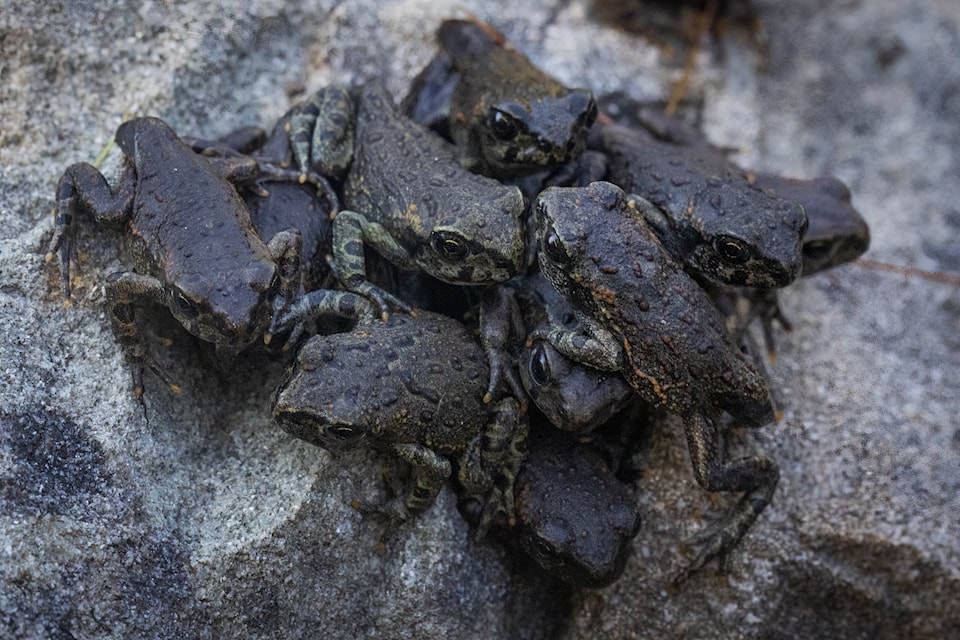It's the time of the year when the sun shines, the flowers bloom, and young western toads make their dangerous trek into the forest.
"Be on the lookout for the wonderful little local amphibians, the western toad…" advised Doug Fraser, president of Nature Nanaimo. "I think a lot of people mistakenly associate frogs with water, and while it is true all of our frogs lay their eggs and develop in the water as tadpoles, many of them live in the forests."
Western toads are a species of concern due to habitat loss. Once a year, during spring, they travel to wetlands with shallow, sandy bottoms to lay their eggs. Each female can lay more than 12,000 eggs, but only one per cent of them are estimated to make it to adulthood.
When the eggs hatch, hundreds to thousands of small black tadpoles swim together, feeding on aquatic plants, until their metamorphosis into toadlets is complete. The toadlets are much smaller versions of their adult selves, appearing just millimetres long, and serving as easy prey.
Then, during a brief time frame sometime in July or August, they make the treacherous journey into the forest.
"They can just blacken the ground where they're exiting the wetland. That's what catches people's attention, this massive migration of these little toadlets," Fraser said. "They're done with the wetland part of their life and they're heading to the forest for the rest of their lives except to come back to breed."
The reason they stick so close together when crossing into the forest, Fraser said, is a survival strategy known as "predator swamping." During this trek they're especially exposed, so by going in mass, when they're attacked by predators such as garter snakes or invasive bullfrogs, the predator can get their fill but some of the young will still make it to their destination.
"It's like if you go to an all-you-can-eat buffet. There's only so much you can eat. These toads, they know that most of them are going to manage to get into the forest past the predators because the predators are all full."
On top of predation, Fraser said the toadlets have to deal with motorists and cyclists potentially running them over.
Across British Columbia, groups have taken measures to try to mitigate this risk. In Cumberland, the mountain bike non-profit United Riders of Cumberland requests riders voluntarily take detours during the migration period around Allen Lake and other breeding areas to help ensure the survival of the population. In Chilliwack, the Fraser Valley Conservancy has even installed 'toad tunnels' to guide the young frogs under the road.
Fraser said anyone who sees a western toad should tread carefully since they might be near a whole lot of them.
"This time of year if you're in the back country, you might just happen upon these toads."



